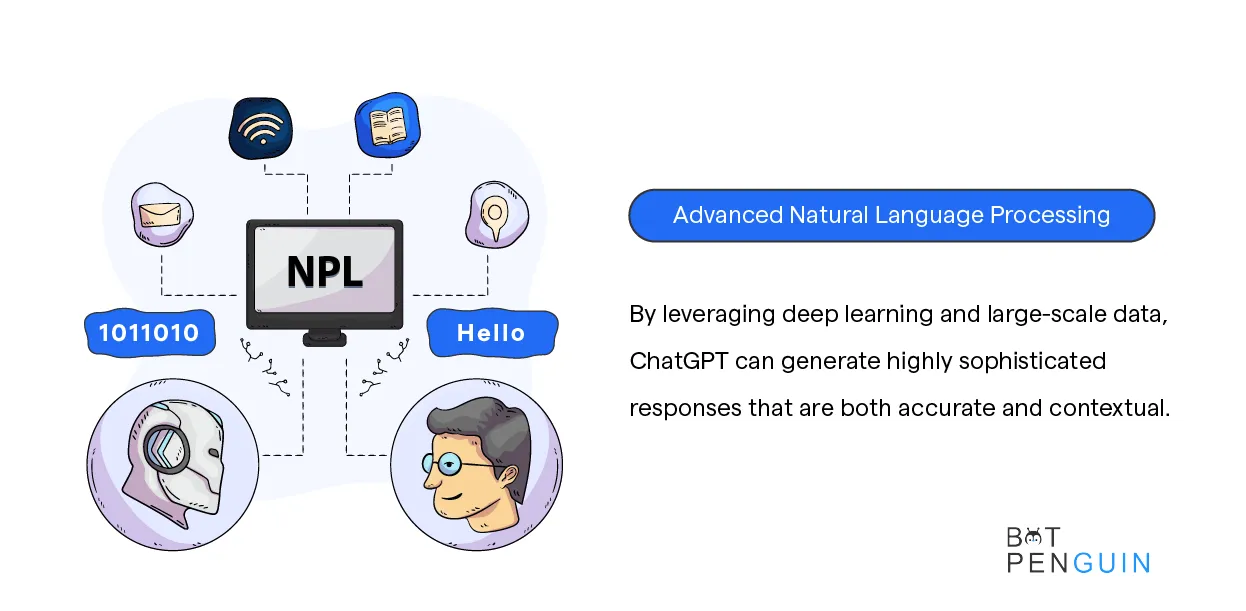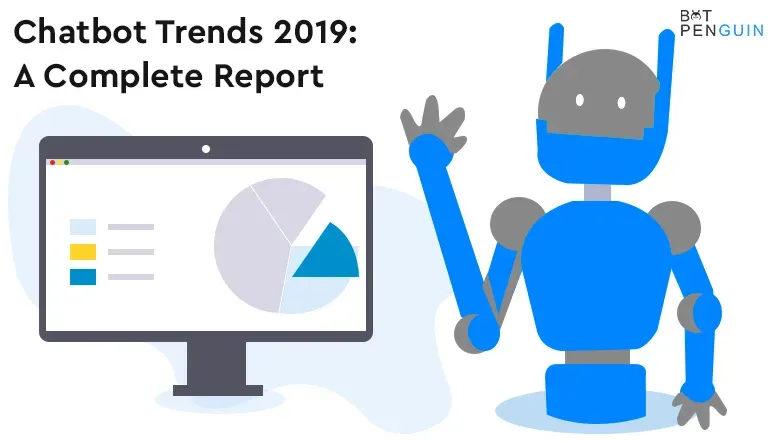As artificial intelligence continues to advance, innovative tools like ChatGPT are revolutionizing the way we communicate and interact. This comprehensive guide will walk you through the essential aspects of ChatGPT, including its history, key features, how it works, frequently asked questions (FAQs), and its practical applications.
What is ChatGPT?
A Brief Introduction to ChatGPT
ChatGPT, which stands for Chatbot based on Generative Pre-trained Transformer, is a state-of-the-art AI language model designed for natural, responsive, and interactive text-based conversations. Using groundbreaking advancements in natural language processing (NLP), ChatGPT can efficiently generate human-like responses to user input.
ChatGPT is not just another chatbot. It is a sophisticated AI system that has been trained on a vast corpus of text data to better understand context, interpret user queries, and produce coherent replies. This type of chatbot opens up a world of possibilities for human-AI communication and collaboration, spanning various industries and applications.
One of the most remarkable features of ChatGPT is its ability to learn from its interactions with users. As users engage with the chatbot, it becomes more adept at understanding their needs and preferences, and it can tailor its responses accordingly. This continuous learning process ensures that ChatGPT is always improving and evolving to meet the needs of its users.
The Evolution of Chatbots and AI
The concept of chatbots dates back to the 1960s with the development of ELIZA, a program created at MIT to simulate conversational interactions. ELIZA's success paved the way for further advancements in AI, including the development of natural language processing methods that enabled chatbots to improve over time.
Over the years, chatbots have become increasingly sophisticated, thanks to the introduction of deep learning and transformer architecture. These advancements have enabled chatbots to understand context, interpret intent, and generate more human-like responses.
ChatGPT represents the latest evolution in AI-based conversational agents. By leveraging the power of pre-trained language models and advanced NLP techniques, ChatGPT is able to generate responses that are not only accurate but also engaging and natural-sounding.
The potential applications of ChatGPT are vast and varied. From customer service and support to education and healthcare, ChatGPT has the potential to revolutionize the way we interact with AI systems and each other.
As AI technology continues to evolve, we can expect to see even more sophisticated chatbots and conversational agents in the years to come. But for now, ChatGPT represents the cutting edge of AI-based conversation, and it is already making a significant impact in various industries and applications.
Key Features of ChatGPT
1. Advanced Natural Language Processing

ChatGPT is an AI-powered chatbot that is revolutionizing the way we interact with technology. One of the key features that sets ChatGPT apart is its advanced natural language processing capabilities. By leveraging deep learning and large-scale data, ChatGPT can generate highly sophisticated responses that are both accurate and contextual.
Unlike previous rule-based or pattern-matching chatbots, ChatGPT can understand the nuances in user input and generate replies that cater to a wide array of conversational needs. With advanced NLP, ChatGPT can engage in context-driven, relevant, and coherent exchanges with users, making it a valuable tool for businesses and individuals alike.
Whether you're looking to automate routine tasks, generate content, or provide customer support, ChatGPT's advanced NLP capabilities make it a powerful and versatile solution.
2. Customizable Conversational Models
Another defining aspect of ChatGPT is its ability to be customized according to specific requirements. Developers can fine-tune the model based on their desired criteria, allowing ChatGPT to better cater to unique applications and industries.
This level of adaptability enables ChatGPT to be highly versatile, making it a valuable tool across various sectors and use cases. For example, businesses can use ChatGPT to provide personalized customer support, while content creators can use it to generate high-quality content at scale.
By allowing developers to customize the conversational model, ChatGPT ensures that it remains relevant and effective in a rapidly changing technological landscape.
Real-time Interaction and Responsiveness
ChatGPT excels in real-time interaction, rapidly generating responses to user input to maintain a smooth and engaging conversation. By providing immediate feedback, ChatGPT can effectively serve as a virtual assistant, content editor, or customer support agent.
Additionally, this real-time responsiveness allows for continuous improvement in user experience. Users and developers can modify input and adapt the AI model based on its performance, ensuring that ChatGPT remains a valuable and effective tool over time.
Whether you're looking to automate routine tasks, generate content, or provide customer support, ChatGPT's real-time interaction and responsiveness make it a powerful and effective solution.
3. Multilingual Support

ChatGPT is designed to be highly versatile, and its sophisticated language processing capabilities empower it to support multiple languages across different domains. This multilingual support ensures that ChatGPT's functionalities remain accessible to a diverse user base, enabling AI-driven conversations across linguistic and cultural boundaries.
Whether you're communicating with customers, colleagues, or friends from around the world, ChatGPT's multilingual support ensures that language is never a barrier to effective communication.
Overall, ChatGPT is a powerful and versatile tool that is transforming the way we interact with technology. With its advanced NLP capabilities, customizable conversational models, real-time interaction and responsiveness, and multilingual support, ChatGPT is well-positioned to meet the needs of businesses and individuals alike.
How ChatGPT Works
ChatGPT is an AI-powered conversational agent that uses natural language processing (NLP) to generate human-like responses to user inputs. The technology behind ChatGPT is a combination of neural network architectures and machine learning approaches that enable the system to learn and analyze patterns in text data at scale.
The Role of Transformers in ChatGPT

Transformers play a pivotal role in ChatGPT's architecture, allowing the model to learn and analyze patterns in text data at scale. A transformer is a neural network architecture that revolutionized the field of NLP by enabling parallel processing and enhanced attention mechanisms for improved context understanding.
Transformers are particularly useful in conversational AI because they allow the model to understand the context of a conversation and generate more coherent and relevant responses. Empowered by transformers, ChatGPT is designed to capture and analyze relationships in text, resulting in better context understanding and coherent response generation.
Fine-tuning the Model with Reinforcement Learning
To improve the performance of ChatGPT, developers can use reinforcement learning, a machine learning approach that incorporates user feedback to train the model. This process involves fine-tuning ChatGPT based on how well it meets desired outcomes, refining its behavior over time.
Reinforcement learning enables ChatGPT to adapt to specific applications and deliver results that align with user needs, ensuring more accurate and engaging conversations. For example, if ChatGPT is being used in a customer service application, reinforcement learning can be used to train the model to provide more helpful and informative responses to customer inquiries.
Ensuring Safe and Useful Conversations
Maintaining the safety and usefulness of AI-based conversations is of utmost importance. Developers implement content filtering techniques and safety layers to ensure that ChatGPT does not generate malicious or inappropriate responses.
Continuous research, improvement, and user feedback contribute to enhancing the safety of ChatGPT's interactions, ensuring responsible AI deployment across various applications. For example, if ChatGPT is being used in a mental health application, developers may implement safety layers to ensure that the responses generated by the model are supportive and helpful to users.
Overall, ChatGPT is a powerful tool that has the potential to revolutionize the way we interact with technology. By leveraging the latest advancements in NLP and machine learning, ChatGPT can provide engaging and informative conversations that are tailored to the needs of individual users.
Frequently Asked Questions (FAQs)

How Does ChatGPT Differ from Other Chatbots?
Unlike traditional rule-based chatbots, ChatGPT utilizes advanced NLP techniques, transformer architecture, and deep learning to generate highly accurate, coherent, and relevant responses. It achieves a higher level of interactivity and engagement, making it a superior conversational agent compared to other chatbots.
What are the Limitations of ChatGPT?
While ChatGPT employs advanced NLP techniques, it can still have limitations in understanding certain nuances and handling ambiguous queries. Furthermore, it may sometimes require additional input to provide a contextually accurate response. Developers continuously refine ChatGPT through reinforcement learning and user feedback to minimize these limitations.
Can ChatGPT Be Integrated with Other Platforms?
Yes, ChatGPT can typically be integrated with various platforms, including web applications, mobile apps, customer support tools, and more. This integration enables organizations to harness the power of AI-driven conversations in their existing products and services.
Is ChatGPT Secure and Private?
Ensuring the security and privacy of user data is a top priority for ChatGPT developers. Robust security measures and privacy policies are implemented to protect user data, and continuous efforts are made to address potential vulnerabilities and maintain compliance with data protection regulations.
Practical Applications of ChatGPT
Customer Support and Service
ChatGPT's advanced NLP capabilities make it an ideal tool for customer support and service. Its ability to understand complex queries and provide contextual responses allows for efficient, round-the-clock customer assistance, reducing wait times and improving overall satisfaction.
Content Creation and Editing
ChatGPT can also serve as an AI-powered writing assistant, offering suggestions, corrections, and insights in real-time. It can generate content tailored to specific requirements, facilitating a more efficient and accurate content creation process.
Personal Assistants and Task Management
With its real-time responsiveness and customizable models, ChatGPT can be a powerful personal assistant, helping users manage their tasks, answer questions, and automate various chores. Its versatility lends itself to seamless integration with task management apps and a wide range of personal applications.



